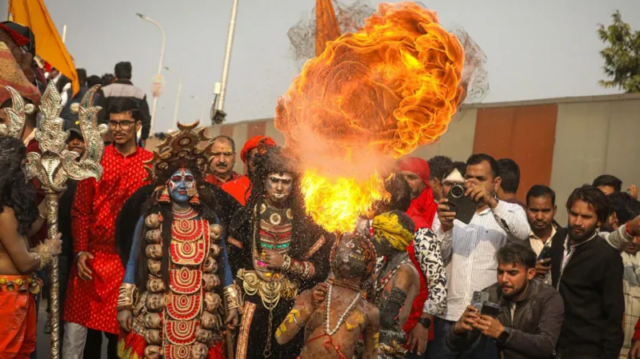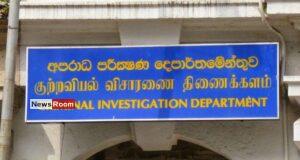By Shiran Illanperuma
Positioned at the geographic and political heart of the Indian Ocean, Sri Lanka is the epicentre of the 21st century struggle for regional influence.
- U.S. Department of State, Integrated Country Strategy – Sri Lanka, 2022
Anura Kumara Disanayake (AKD) is the first President of Sri Lanka not affiliated with the political duopoly of the nationalist Sri Lanka Freedom Party (SLFP) and comprador United National Party (UNP), and their offshoots which have ruled the country in turns since the 1950s.
In the first elections held since the collapse of the Sri Lankan economy in 2022 and its default on external debt, AKD secured 42.31% of the popular vote, while his right-wing rivals Sajith Premadasa and Ranil Wickremesinghe secured 32.76% and 17.27% respectively. A month later, on 15 October 2024, AKD’s party National People’s Power (NPP) won a thumping 61.56% of the popular vote in the general elections.
In contrast to his fiery pre-election speeches, which lashed out at the corruption of establishment politicians, AKD struck a measured tone in his first speech as President. Acknowledging the significant challenges that his government inherits, AKD said that the ‘profound crisis’ facing the country could not be resolved by a single government, political party, or individual. ‘I am not a magician. I am simply an ordinary citizen of this country, with both strengths and limitations, knowledge and gaps,’ AKD said. Now in power, AKD must temper messianic expectations and govern under conditions given to him. All this while commanding a party with little experience in holding the reins of government, let alone withstanding the daily harangues that can be expected from the local and foreign agents of imperialism.
Following these elections, mainstream media outlets moved rather recklessly to label AKD and the NPP government as, ‘Marxist’, ‘Marxist-leaning’ or ‘Neo-Marxist’. It is true that the core constituent party of the NPP is the Marxist-Leninist Janatha Vimukthi Peramuna (People’s Liberation Front – JVP), of which AKD is also the leader. However, the main representatives of this force have been far more cautious in how they label themselves. In 2023, AKD compared the NPP to a national liberation movement. On the eve of elections this was moderated to the more neutral sounding ‘national renaissance’. Some intellectuals close to the party have described the NPP as ‘Left-populist’. More recently, JVP General Secretary Tilvin Silva has said that, ‘Ours is not a leftist government, but one of leftists, democratic, and progressive forces’.
The NPP’s caution to label itself gives an indication of the delicate balance of political forces, both within the party and in the country at large. The fledgling government has already shown its inclinations and limitations. On foreign policy, the government has formally applied for BRICS membership, although neither President Dissanayake nor Prime Minister Harini Amarasuriya nor Foreign Minister Vijitha Herath attended the BRICS summit in Kazan, Russia. In his first speech to the diplomatic community, the NPP Foreign Minister Herath reiterated Sri Lanka’s call for an immediate ceasefire in Gaza, alongside support for the establishment of an independent State of Palestine. On the domestic front, one of AKD’s first acts was to instruct the Treasury to provide subsidies for farmers and fisherfolk. The government has also scrapped plans to privatise national carrier SriLankan Airlines and the public electricity provider Ceylon Electricity Board.
However, the risk of lapsing into neoliberal immobility remains ever present. While there may be a new President and a slew of new faces in Parliament, the officials in charge of the Treasury and the Central Bank of Sri Lanka remain the same. The government has chosen to continue with an ongoing IMF programme and its path of fiscal consolidation. It has also continued with a debt restructuring agreement negotiated by the preceding government. According to IMF Director Kristalina Georgieva, “The Sri Lankan authorities have reaffirmed their determination to persevere with their reform agenda and put the economy on a path of sustained and high growth.’’
To understand Sri Lanka’s present conjuncture, and the dilemma’s facing the new government, a concrete analysis of the preceding years is required. The main factors for analysis are the interplay between Sri Lanka’s geopolitical significance in the US Indo-Pacific Strategy, as well as the country’s legacy of colonial underdevelopment and indebtedness.
Sri Lanka as epicentre of Indo-Pacific Strategy
Shortly after the conclusion of Sri Lanka’s Civil War in 2009, the US Senate Committee on Foreign Relations, then led by senator John Kerry, published a report, titled Sri Lanka: Recharting U.S. Strategy After the War. The report argued that policymakers in Washington tended to ‘underestimate Sri Lanka’s geostrategic importance’, insisting that, ‘the United States cannot afford to lose Sri Lanka’. These statements were partly in reference to the Western criticism of Colombo’s handling of the war against the separatist group Liberation Tigers of Tamil Eelam (LTTE). Amid Western pressure to pursue peace talks, including a US arms embargo, Colombo forged closer ties with China, Russia, Iran, and Libya, which provided the arms and financing needed to clinch victory against the LTTE. During the final years of the war, the JVP insisted that peaceful negotiations were impossible with the LTTE. Given a history of repeated failed peace talks and ceasefires, this was a persuasive argument to many war-fatigued Sri Lankans. Thus, Washington’s fear of ‘losing Sri Lanka’ needs to be understood in the context of Sri Lanka’s domestic nationalist upsurge against separatism, as well as the country’s foreign policy swing towards forces in the Global South.
Sri Lanka’s economic and foreign policy shifted to the right after the 2015 elections, as the nationalist SLFP split and one faction formed a coalition with the UNP, whose leader Ranil Wickremesinghe became Prime Minister. Despite criticising Sri Lanka’s human rights record in diplomatic forums, the US began a concerted effort to improve military engagement with Sri Lanka’s armed forces, specifically with the Navy. This entailed training and joint military exercises, and the donation of Navy vessels. The US also sought to pressure the government in Colombo into signing a trifecta of agreements, which Sri Lankan diplomat Tamara Kunanayakam warned were ‘part and parcel’ of the US Indo-Pacific strategy, and, if signed, would violate Sri Lanka’s sovereignty and drag the country into ‘a war not of its own making’. These agreements were:
* The Millennium Challenge
Corporation (MCC). Political economist W.D. Lakshman (who served as Governor of the Central Bank of Sri Lanka from 2019 to 2021) warned that the MCC’s provisions for the privatisation of publicly owned land would pave the way for a land grab by multinational companies. A government committee appointed to review the MCC agreement recommended rejecting it unconditionally, noting that certain stipulations would be in violation of the Constitution.
* The Acquisition and Cross Servicing Agreement (ACSA)
ACSA, which provides the US military with logistical support and refuelling services in Sri Lanka was first signed in 2007. The agreement was never tabled in Parliament despite pressure from the Left. ACSA was renewed under hasty and similarly opaque circumstances in 2017. The new agreement was said to be open-ended and over 10 times as long as the previous one.
* The Status of Forces Agreement (SOFA)
SOFA was first signed by the Sri Lankan government in 1995, and a new draft was sent to the government in 2018. A leaked version of the draft revealed that US security forces and contractors, as well as personnel of Department of Defence, would enjoy legal immunities equivalent to diplomatic staff.
The JVP constituted part of the popular opposition to these agreements. For example, in an interview in 2020, AKD said that his position on the MCC was ‘a big no’, citing concerns over land privatisation. However, the political formation that most effectively drove and capitalised upon popular opposition to these neocolonial proposals was the Sri Lanka Podujana Peramuna (SLPP), a big-tent party founded by former President Mahinda Rajapaksa, which included Sinhala nationalists and elements of the Old Left (namely the Lanka Sama Samaja Party, founded in 1935, and the Communist Party of Sri Lanka, founded in 1943). In the 2019 presidential elections, the SLPP candidate Gotabaya Rajapaksa scored a comfortable victory in a campaign that was inflected with a combination of economic grievances and concerns over the erosion of the country’s sovereignty.
Following the 2019 elections, US pressure on Sri Lanka intensified. A government-appointed commission recommended that the country refrain from signing the proposed MCC agreement with the US. In 2022, the US sanctioned Sri Lanka’s Chief of Army Staff Lt. Gen Shavendra Silva. The same year, US Secretary of State Mike Pompeo visited Sri Lanka for a 12-hour trip, during which he told the media that the ‘Chinese Community Party is a predator’. This blunt and aggressive posturing by Pompeo made perfectly clear that the US viewed Sri Lanka as key part of its Indo-Pacific Strategy and New Cold War against China. Indeed, the US State Department notes ‘more than 60,000 ships – including two- thirds of the world’s seaborne crude oil, half of its container ships, and all U.S. Navy vessels passing between the 5th and 7th Fleets – annually transit Sri Lankan waters’.
In March 2022, on the eve of the protests that would go on to oust President Rajapaksa, US Under Secretary of State for Political Affairs Victoria Nuland visited the country to meet with civil society. Rajapaksa’s ouster bore some similarities to the protests that overthrew Sheikh Hasina in Bangladesh, constituting a combination of internal factors and genuine grievances over governance failures and economic conditions, as well as hybrid war tactics by the US and its network of soft power agencies to gain advantage through the crisis. As is the case in many of these situations, external interests capitalised on internal contradictions. Following Rajapaksa’s ouster, right-wing leader Ranil Wickremesinghe was appointed interim President. Under his leadership, the US had donated more Navy cutters to the Sri Lankan military. Months later, Sri Lanka appeared further subordinated to US imperialism after it sent one of its own Navy vessels to the Red Sea in order to help the US fight the Ansarullah government in Yemen.
(To be continued….)
(This essay was produced by Tricontinental: Institute for Social Research as part of its monthly series Tricontinental Interventions: Conjunctural Analysis from Asia.)








